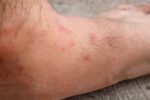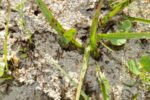
Most Common Rodents in South Florida
It’s no secret that rodents have cohabitated with humans since they made their way to Europe via cargo ships from Asia. Today, Old World rodents, such as Norway rats, roof rats, and house mice have made their homes in many cities in the US, as well as spreading out to any place humans dwell. Why do more rodents seem to be entering homes than before? More building means more people moving into more spaces. Humans bring rubbish and trash that rodents find easier to eat than hunting down their own food. Additionally, land development encroaching on animal habitats can deplete natural food sources, as well as crowd rodent habitats. Moving into your home just seems a lot more advantageous than wintering in the wild.
South Florida perfect place to attract rodents
South Florida’s famous coastline is ideal as a port of entry for rodents wanting to live in South Florida. And who doesn’t? South Florida’s mild temperatures attract all manner of household pests and uninvited visitors. However, rats and mice can’t be content with just enjoying the sunshine in South Florida; when the temps do drop slightly in the fall and winter months, rodents want to go inside where it’s warm and spend the winter not worrying about predators. Rodents adapt readily to almost any environment and those environments with plenty of food, water, and shelter rank high on the list of winter rodent retreats.
How Do Rats Enter the House?
Well, they’re tricky and able to squeeze their bodies through spaces no bigger than a dime for house mice and a quarter for rats. Rodents climb, which means they can enter homes through attic vents and other cracks and crevices in your home’s foundation. Rodents can chew their way through many different materials including concrete and metal. Because their teeth grow 4½ to 5½ inches annually, rodents need to chew constantly to keep their choppers in check. Rats have also been known to enter homes by swimming up toilets. Rats can swim up to three days; they can out swim your Labrador retriever and some ducks.
Types of Rodents in Florida
You might be surprised by the different types of rodents that can make themselves at home in your attic or backyard. From the tiny house mouse to the larger, more notorious roof rat, each type of rodent brings its own set of challenges. Let’s take a closer look at the most common rodents you might encounter in the Sunshine State and what you can do about them.
Norway Rats
Also known as brown rats, sewer rats, and ship rats, Norway rats inhabit every continent except Antarctica. In South Florida, these ubiquitous pests mostly inhabit coastal and canal areas, thriving in marinas and recreation areas where trash may not be contained properly. Reddish-brown to gray in color with blunt muzzles, Norway rats appear heavy-set and weigh about ¾ to a pound, as adults. With distinctively long tails, just slightly shorter than their combined head and body lengths, Norway rats can measure 15-18 inches in length. Norway rats also burrow, digging under buildings or concrete slabs for food. Burrowing can cause significant damage by:
- Undermining building foundations
- Blocking sewer lines
- Eroding levee banks
- Disfiguring landscape plantings
In the one-year lifespan of female Norway rats, they reach sexual maturity in 3-5 months, bearing 8-12 offspring per litter and expect to bear up to 7 litters per year. That’s a lot of rats.
Roof Rats
Thriving in attics, roof spaces, palm trees, and ornamental shrubbery, roof rats prefer to nest off the ground and climb wires, trees and limbs to get to higher ground. In South Florida attics, roof rats are suspected to cause many house fires by gnawing through electrical wires. Ranging in color from black to grizzled gray to tan with a lighter belly, roof rats are smaller than Norway rats, weighing in at ½ to one pound. Slender, with large, floppy ears, and a pointed muzzle, a roof rat’s tails is longer than their head and body combined, with a total length of 13-18 inches. Like Norway rats, roof rats mature sexually in 3-5 months, with females producing 6-8 young per litter at up to 6 litters per year.
House Mice
While more mice enter structures than rats, due to their smaller sizes, house mice usually live outdoors in fields, occasionally entering structures, settling in behind walls and in cabinets and furniture. Ranging from brown to gray in color, with large ears and tiny dark eyes, house mice can measure up to 7½ inches, with tails as long as their head and body lengths combined. Living about a year, like roof rats and Norway rats, house mice mature sexually in 6 weeks, producing 5-6 young per litter, up to 8 times per year.
Signs of Rodent Activity
Scratching sounds in your walls, running sounds in your attic and squeaking sounds at night all indicate rodent activity. Urine or feces detected near food sources, oily marks on walls, and evidence of chewed materials are good indications that rodents are nearby. If you see a rodent in your home, you’ve reached the point where you need to call a professional pest control company. Trying to eliminate a rodent infestation on your own can be a lengthy, unpleasant, and often unsuccessful undertaking. At Hulett, our strategic placement of baits ensures that rats won’t expire in hard to find spaces in walls. Our highly trained, licensed, and certified technicians will return to your home to remove rodent carcasses until no rodent activity is detected.
How Can I Get Rid of Rats in the House?
The best way: Exclusion, making your home unattractive to common rodents by sealing all cracks, tiny holes, and crevices around your foundation, in your attic, around windows, doors, and other potential entryways. Other things you can do if you suspect a rat in your house:
- Trim branches away from your home
- Clean up thoroughly after dining and snacks, washing all dishes, sweeping or vacuuming crumbs and ensuring rubbish is securely contained in trash receptacles
- Eliminate clutter indoors and out
- Keep grass cut short and eliminating any areas of dense, tall vegetation
Just Call Hulett for Rodent Control Near You!
Contact Hulett for a free rodent inspection and get on board with one of our Healthy Home programs to keep your home pest-free year-round. Hulett Environmental Services is South Florida’s leading local pest control company, with over 50 years of experience, serving areas like West Palm Beach, Port St. Lucie, Vero Beach, and more. We guarantee you’ll be satisfied. Just call Hulett!




